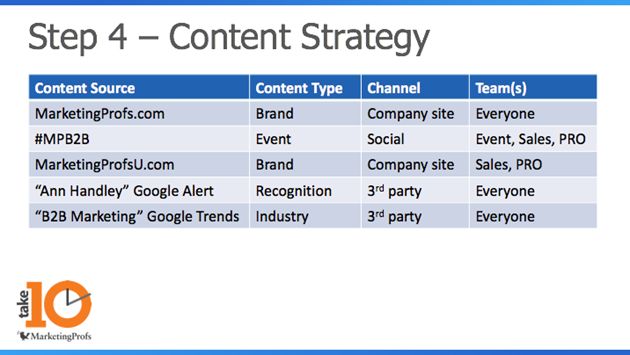Word-of-mouth marketing is not new, but companies are putting a new spin on it to elevate their brand in ways that help marketing, sales, and recruiting.
What's the spin? Instead of customers, employees are the ones spreading word to their personal social networks through employee advocacy programs. Those networks have built-in trust and authority that a brand page would have to work harder (and spend more) to achieve.
To raise awareness and reach new audiences, employees spread the word about their company, including job openings, company culture, and company events.
If the idea sounds intriguing to you, it should, because employees have real power:
- Brand messages reach 561% further and are re-shared 24 times more frequently when shared by employees vs. the brand. (Source: MSL Group)
- Job applicants from employee referrals are hired 55% faster than average; referral hires constitute 40% of all hires; and 46% of referral-hired employees will stay longer than three years. (Source: Jobvite)
- Some 55% of people trust information shared by employees of a company on social media, content sharing sites, and online-online information sources. That's up 9 percentage points in 2016—up from 46% in 2015. (Source: 2016 Edelman Trust Barometer)
However, you can't simply whip up an employee advocacy program and expect it to be successful. You will need planning, buy-in, great content, and empathy to create a program that is habit-forming and rewarding both to the employees and to the company.
Download my MarketingProfs presentation on the 7 steps to successfully launch your employee advocacy program—free to MarketingProfs PRO Members, and only $10 otherwise. You'll learn how to define success, create a content strategy, and get the right people involved from the start so your program can grow. Get the Take 10 materials here.
Clear Goals
It's no secret that any campaign or initiative that begins with a clearly defined goal is executed more successfully than fly-by-the-seat-of-your-pants counterparts. Your employee advocacy program is no different.
Use the SMART goal method (specific, measurable, attainable, realistic, time-based) because it holds everybody accountable. You can have more than one goal, such as macro goals for the entire program and micro goals that apply to specific areas of the program, such as participation, reach, and conversion.
Here are some examples of macro and micro SMART goals that you could adapt for your own employee advocacy program. Define goals by finishing the sentence, Our program will be successful if...
- Within 12 months, access to our employee advocacy platform is rolled out to 100% of our employee base and training is included in all new employee onboarding. (Macro goal)
- Within the first 60 days of launch, we can capture one inbound lead or candidate application as a result of employee-shared content. (Micro goal that would likely justify program expansion)
- After being part of the program for three months, participants still log in to read and share content more than once a week. (Micro goal that could justify discontinuing another employee communication tool, like a newsletter service)
- We can sustain active participation rates above 50% (measured quarterly) for each division that participates in the program. (Macro goal)
Executive Sponsorship
The other benefit of having a clear goal is that it's easier to get buy-in from senior management to start your employee advocacy program. And it's not just a matter of budget. The most successful employee advocacy programs also have executive sponsorship—someone to both champion the program internally and lead by example as a participant.
The key to finding the right executive sponsor is to look for someone who appreciates a strong employee culture and has an established digital and social footprint.
Once you've identified potential candidates, simply reach out to them to explain the goals for your employee advocacy program, and invite them to provide feedback and input.
Ask your executive sponsor to announce your employee advocacy program to the entire organization. That person's status within the company will carry the most weight when explaining the purpose of employee advocacy, which will translate to greater participation and enthusiasm.
Relevant Content
At the core of employee advocacy is content. You are asking employees to spread the word about your company to raise awareness and reach new audiences. Your company should therefore be publishing great content that they'll be proud to share.
The most successful employee advocacy programs include not just company-related content but also a healthy mix of industry content to turn employees into valuable resources worthy of your audience's attention.
To create a healthy and substantive content mix for your employees, start by making a list of all the types of content you create and where it's published. Add in brand and industry hashtags, Google Trend or Keyword alerts, lists of influencers, and industry websites that you know frequently publish great content.
The following is a basic example of a content strategy chart (in this case, for MarketingProfs), taken from my Take 10 presentation:

You'll notice the "Team" column, and that has to do with segmenting your content, since not all content is going to be relevant to all employees:
- For example, tweets about the marketing tradeshow where your VP is speaking is more relevant to the marketing team than to an engineering team.
- Similarly, the networks of your engineers are more likely to respond to a job posting about an open engineering position than the networks of your partner sales team.
Enthusiasm with your employee advocacy program and its success stem from segmenting the content you curate into your employee advocacy platform. Otherwise, you risk creating a reading environment within your platform that is filled with content that your employees can't connect with personally.
A poor experience influences employees' desire to share it with their network, and their desire to continue seeing the employee advocacy platform as a meaningful use of their time.
Be sure to map out your teams and segmentation strategies ahead of time, so you know how much unique team content needs to be curated each week. This may seem like a daunting task, but it's worth it for the positive, relevant experience you're creating for your participants.
To help with the additional content volume required by the need to segment, here are a handful of ideas that go beyond blog posts, tweets, and videos that are published on company sites and profiles:
- User-generated content (UGC) from customers and fans
- Recognition and earned media
- Guest blog posts from your employees
- Event-related social content
- Industry and influencer articles
- Job openings
- Customer, vendor, and partner successes
- Retweeting tips from your brand profiles
Consistent Habits
The last piece of a successful employee advocacy program is the responsibility on the part of the program administrators to keep the program top of mind through constant promotion and use.
Employee advocacy programs, and the tools that go with them, are generally considered non-essential uses of an employee's time. It's your job as a program administrator to acknowledge that, but strive to deliver a valuable, meaningful experience for them every time they log in, lest the effort be dismissed as pointless.
In addition to promoting the program as a whole, practicing empathy has a positive impact on how your employees will participate in the program:
- Remember that you're renting space on their social profiles, so the content you ask them to share needs to represent them and needs to carry their voice (not the voice of the marketing department).
- Understand (and nurture) what motivates your employees to be advocates for your company.
- Recognize participation, achievement, and enthusiasm in a meaningful way on the individual, team, and company levels. Employees want to know that their efforts are working!
Just as in traditional word-of-mouth marketing, success happens only when your participants are engaged and motivated on a personal level. Use the above outline to continually provide them a relevant and motivating experience, and your employees will champion you in ways that benefit everyone!




